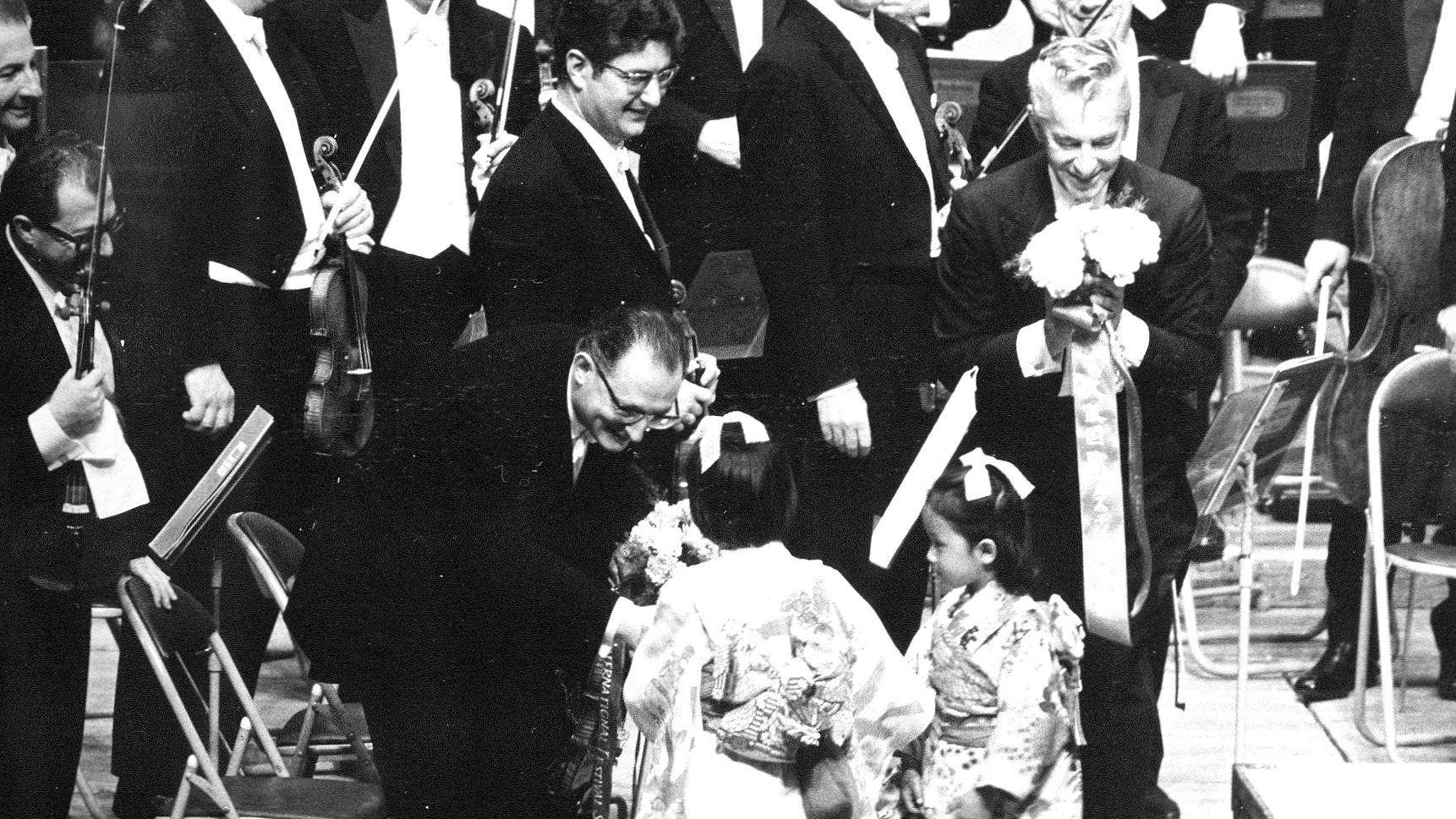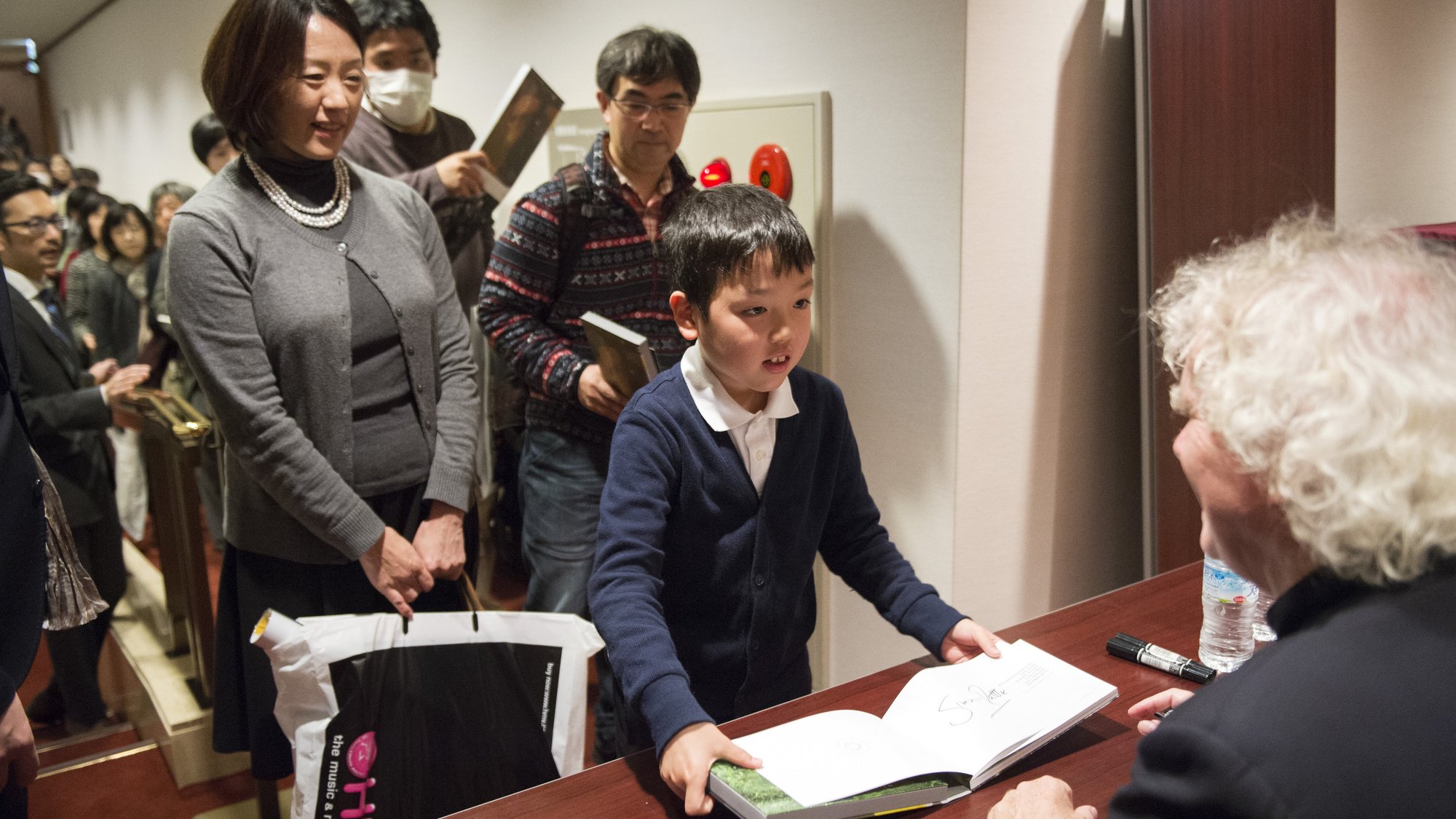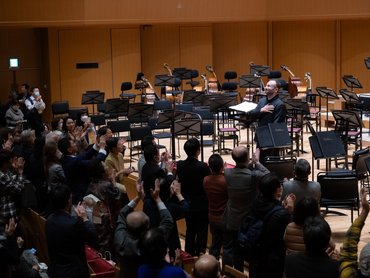The orchestra's Japan tours

In 1957, the orchestra’s 75th year, the Berliner Philharmoniker and its then chief conductor, Herbert von Karajan, travelled to Japan for the first time. As the in-flight catering menus show, special dishes such as “À la Furtwängler”, “Philharmonic vegetables” and “Karajan potatoes” were served on the 45-hour flight. Imagine how these dishes tasted!
First concertmaster Michel Schwalbé remembers arriving in Japan on 31 October that year: “When we landed at Haneda Airport, the reception we received from the Japanese truly exceeded all of our expectations. As soon as we came out of the airport, we were surrounded by so many fans that we could hardly move.” Three days later, Karajan conducted Beethoven’s Fifth Symphony at the orchestra’s first concert. It was broadcast live on radio and television by the Japanese state broadcaster NHK, the organisers of the tour. The Berliner Philharmoniker was in Japanese living rooms for the first time. The tour consisted of 16 concerts, from Sendai in the north to Fukuoka in the south. Back then, when there was no “Shinkansen” (bullet train), the train journey from Nagoya to Fukuoka took a whole day.
The Japanese musicians who studied in Berlin
However, the connection between Japan and the Berliner Philharmoniker began well before 1957. “At last we welcome the long-awaited Berliner Philharmoniker,” wrote Kosaku Yamada, one of the first Japanese composers to write “western” contemporary classical music, in an essay for the programme booklet of this first concert tour. “What an absolute joy! Especially for us ‘old university students’ who love German music from the bottom of our hearts and who see it as our spiritual home, this is an immeasurable pleasure.”
Yamada had studied music in Berlin before the First World War, and the city was one of the leading destinations for Japanese students until around 1940. Many musicians, including Yamada, were able to listen to daily concerts by the Berliner Philharmoniker under the direction of renowned conductors such as Furtwängler and Richard Strauss. From 1924 to 1940, Hidemaro Konoe, the founder of the New Symphony Orchestra (today’s NHK Symphony Orchestra), was the first Japanese conductor of the Berliner Philharmoniker, and he passed on his experience with the orchestra whenever he returned home.
“Karajan and Berlin Phil”
After their second visit to Japan in 1966, the Berliner Philharmoniker travelled to Japan regularly. The programme booklets of the time always contained advertisements for records featuring Karajan and the Berliner Philharmoniker. In Japan, “Karajan and the Berliner Philharmoniker” was practically synonymous with classical music. In the 1980s, Karajan’s health deteriorated. An agency employee from the 1984 tour remembers being backstage: “When Maestro von Karajan wanted to enter the stage with Wolfgang Ringer, the stage manager, on his arm, he signalled to me with his eyes that he wanted me to help him. So I also held one of the maestro’s arms. It was a long way to the conductor’s desk. Mr von Karajan probably wanted to avoid any physical exertion, so that he could concentrate on the music.”
Karajan withdrew from the 1986 Japan tour for health reasons. His pupil Seiji Ozawa stood in for him. Karajan visited Japan for the last time in 1988 and conducted at Suntory Hall in Tokyo for the first time; he had been involved in the design of the building. The square in front of Suntory Hall bears his name today.

Touring Japan with Abbado and Rattle
Karajan’s successor Claudio Abbado conducted the Japan tours in the 1990s: in 1992, the Philharmoniker performed a Brahms cycle. Subsequent tours of Japan included symphonies by Gustav Mahler, which Karajan had hardly ever performed. During Abbado’s final visit to Japan in the autumn of 2000, the programme was Wagner’s Tristan und Isolde at the Tokyo Bunka Kaikan. Japanese fans still talk about it today. Abbado’s successor, Sir Simon Rattle, conducted the orchestra in a total of seven tours of Japan between 2004 and 2017. In addition to the standard symphonic repertoire, Rattle performed works by contemporary composers such as Thomas Adès, Toshio Hosokawa and Unsuk Chin.
The first Japan tour with Kirill Petrenko
Although the Digital Concert Hall now brings the Berliner Philharmoniker’s concerts to the Japanese public every week, a concert tour remains something special. It provides the audience with the opportunity to experience the Berliner Philharmoniker live. The friendship between Japan and the Berliner Philharmoniker is also fostered through performances by various ensembles of the orchestra, workshops by orchestra members and exchanges with amateur orchestras.
The importance of the role played by former and active members such as Kunio Tsuchiya, Toru Yasunaga, Kotowa Machida, Naoko Shimizu, Daishin Kashimoto and Marlene Ito in this cultural exchange cannot be overstated. The involvement of Seiji Ozawa, who has performed around 200 times with the Philharmoniker and is an honorary member of the orchestra, is also inestimable. The first visit to Japan with the current chief conductor Kirill Petrenko in November 2023 will include performances of the German-Austrian core repertoire as well as the “Be Phil Orchestra” project, an orchestra made up of Japanese amateur musicians and members of the Berliner Philharmoniker. It promises to be an exciting time!
